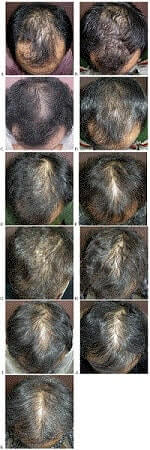Several days ago, I came across a hair loss forum post concerning a study related to a new topical hair loss product. This study was looking for volunteers and is taking place at Wake Forest Baptist Health Medical Center in Winston-Salem, North Carolina.
Update: On the hair loss forums, some people think that this could be related to US army related research. Or to Samumed’s second Phase 2 clinical trial for SM04554, which includes scalp biopsies this time around. This second study is enrolling only 50 volunteers, as opposed to the 300 enrolled the first time around. I feel like the army research makes more sense, since none of the centers listed in Samumed’s latest presentation include any locations in North Carolina. On the other hand, Wake Forest (along with Rutgers University and the University of Pittsburgh) does have a significant relationship with the US army’s regenerative medicine research section.
Until this week, I had not read much about any significant hair loss research being conducted at Wake Forest University. However, the above study made me do some digging around. To my surprise, I found that Wake Forest has a part of its dermatology department dedicated to hair loss and body hair removal research. Moreover, it seems like the dermatology department’s chair Dr. Amy McMichael is especially well versed in women’s hair loss and ethnic hair and skin problems.
I have therefore decided to add Wake Forest University to my list of key hair loss research centers around the world.
Note that Wake Forest is also home to the renowned regenerative medicine researcher Dr. Anthony Atala. His videos on Tedtalk are a must watch. Also see the Wake Forest pages on printing skin cells of burn wounds and on their story.
